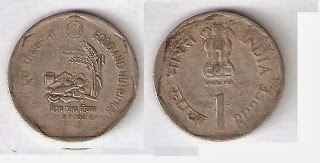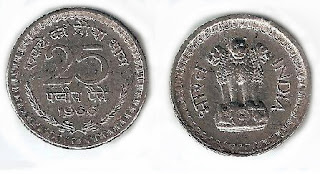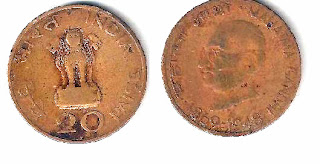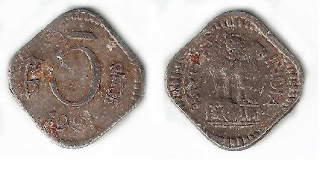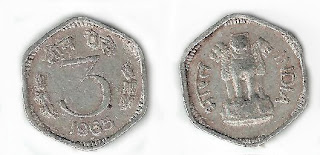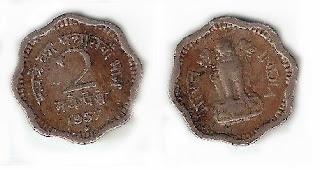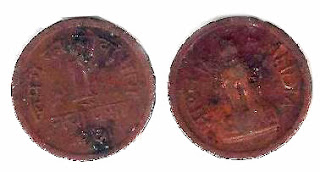2 rs coins
.JPG) |
| 2rs coin(1x Asian Games 1982) |
The figure on the obverse is the Jantar Mantar, which was the logo of the Asian games of 1982 and has also featured on many coins and stamps. The jantar mantar is situated at what is now the Connaught place area of Delhi, and was built by raja Sawai Jai Singh, the founder of Jaipur between 1710 and 1724. It is actually a complex observatory built in the 18th century, the dark age of Indian history. The Maharaja built five such Jantar Mantars including one at Delhi. The other four monuments are built at Jaipur, Varanasi, Ujjain and Mathura. Delhi’s monument, however, is historically the most important in all the five.it also serves somewhat like London’s Hyde Park, as the venue of all sorts of protests and demonstrations by individuals, groups and even larger political parties.The figure on the obverse is the Jantar Mantar, which was the logo of the Asian games of 1982 and has also featured on many coins and stamps. The jantar mantar is situated at what is now the Connaught place area of Delhi, and was built by raja Sawai Jai Singh, the founder of Jaipur between 1710 and 1724. It is actually a complex observatory built in the 18th century, the dark age of Indian history. The Maharaja built five such Jantar Mantars including one at Delhi. The other four monuments are built at Jaipur, Varanasi, Ujjain and Mathura. Delhi’s monument, however, is historically the most important in all the five.it also serves somewhat like London’s Hyde Park, as the venue of all sorts of protests and demonstrations by individuals, groups and even larger political parties.
This 2 rupee coin was released on the occasion of the IXth Asian games, which were held at Delhi in 1982. The Asian Games, also called the Asiad, is a multi-sport event held every four years among athletes from all over Asia. The games are regulated by the Olympic Council of Asia (OCA) under the supervision of the International Olympic Committee (IOC). Medals are awarded in each event, with gold for first place, silver for second and bronze for third, a tradition which started in 1951.
The first Asian Games were held in New Delhi in 1951, where they were held again in 1982.
Competitors are entered by a National Olympic Committee (NOC) to represent their country of citizenship. National anthems and flags accompany the medal ceremonies, and tables showing the number of medals won by each country are widely used. In general only recognised nations are represented, but a few non-sovereign countries are allowed to take part. The special case of Taiwan was handled by having it compete as Chinese Taipei, due to the political status of Taiwan.
As you enter the Jantar Mantar, you find some abstract structures within its premises. They are, in fact, yantras- instruments to track the celestial bodies, plot their course, predict the eclipses and keep the time. There are four yantras-- Samrat, Misra, Jai Prakash and Ram. They tell a lot about the technological achievements under the Rajput kings and their efforts to understand the mysteries of astronomy. These yantras were designed by the Maharaja himself.




.JPG)
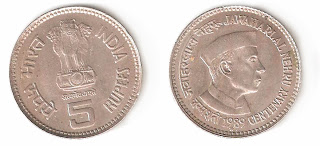
.JPG)
